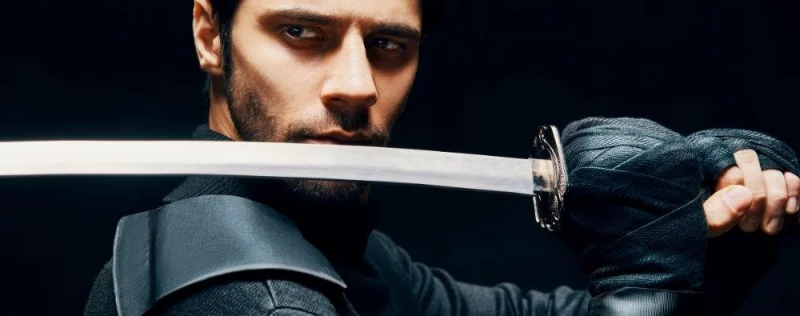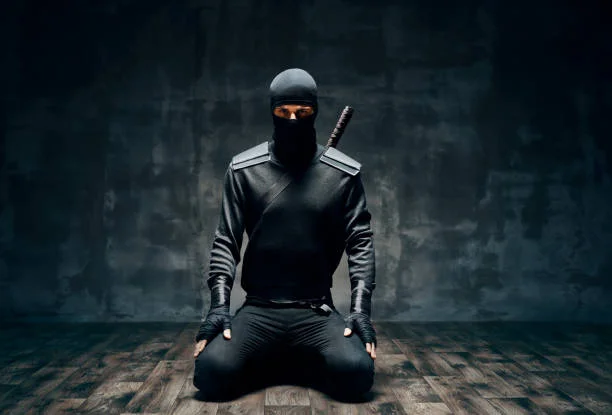What is The History of Katana Swords?
The Katana is a stylish, curved sword. It is closely associated with the samurai and often mistaken for another simple weapon. However, few people know the long history, complex craftsmanship, and deep cultural values it carries.
This article will explore the katana’s evolution, origin, and timeless legacy. It will also uncover the swords role in shaping Japan’s history and culture.

Origins and Early Development
The katana’s history began in ancient Japan. Its origins trace back to ancient Japanese swords inspired by Chinese swordsmanship. Later, these early blades, often straight or curved, evolved. This led to the creation of the tachi during the Heian era. Also the tachi, a longer, curved weapon, was used mainly by mounted warriors.
The Golden Age of the Katana
The Kamakura period marked Katana’s golden age. During this time, master swordsmiths changed blade-making skills. They refined the forging process to form much stronger and sharper blades. As a result, new features like the single-edged blades were solidified.
The Muromachi Period
The samurai continued to evolve, just like the Katana. Also the Muromachi period marked a change towards shorter and broader blades, ideal for close-quarters battle. This shift underscored the changing dynamics of warfare, which became more focused on infantry combat. Mass crafting techniques were also introduced, making katana more widely available to various warriors.
The Edo Period
The Edo period was relatively calm and stable. It brought a fresh focus on the Katana’s aesthetic and spiritual aspects. Swordsmiths continued to perfect their skill, creating blades of outstanding beauty and quality. While no longer directly involved in fighting, the samurai class still treasured the Katana as a sign of honor. Swordsmith guilds were formed to improve skills and practices and protect traditional techniques.
The Art of Swordsmanship (Kenjutsu)
This technique relates to sword use. It is deeply connected to the culture and history of the Katana. There are various styles, philosophies, and schools, each with a unique approach to handling the blade.
Historical Development
Kenjutsu traces its origins back to medieval Japan. During that period, swordsmanship was an essential art for warriors. Over centuries, these techniques changed and were consolidated into distinct schools. The samurai, with their stringent code of discipline and honor, helped to shape the rise of kenjutsu. They aimed to master the swordsmanship art for practical reasons and to establish spiritual and mental discipline.
Major Schools of Kenjutsu
The Edo period saw the emergence of several kenjutsu schools. Each school had its distinctive philosophy and style.
Kendo
Kendo is a style of fencing derived from kenjutsu. Practitioners use bamboo swords and protective gear to resemble real sword combat. It requires rigorous physical training and specialized skills, which inevitably require practice.
Iaido
This is a traditional martial art in Japan that focuses on quick drawing of the sword. The practitioner must fully know their surroundings and execute precise strikes in a single, fluid motion. Artists use a sequence of unique moves to enhance their skills and mental focus.
Battojutsu
Practitioners of battojutsu focus on speed and precision in drawing and striking. This swordsmanship technique is often used in real-world instances like self-defense.
The Role of the Katana in Kenjutsu
Katana’s distinctive features make it the ultimate weapon of kenjutsu. The sharp edge and curved blade provide efficiency when making offensive and defensive moves. The application of katana in warfare involves various techniques. Kenjutsu fighters use two swords to block and strike their opponents simultaneously. However, this technique needs additional training.
Apart from its practical use, katana and wakizashi has fundamental cultural relevance in kenjutsu. It’s an extension of a practitioner’s well-being. Drawing and wielding the sword can be a soothing experience. It allows players to engage with their souls and be re-energized.

The Katana’s Symbolism and Spiritual Significance
The Katana has a profound spiritual significance in Japanese culture. It’s deeply linked with Zen Buddhism, a philosophy emphasizing mindfulness and focus on body and mind. Zen masters often utilized the Katana as a therapeutic tool. They compared the sword’s sharpness to clarity of mind. Drawing the sword from its grip represents a reconnection to one’s true nature.
The weapon also forms part of Shinto rituals and ceremonies. Shinto is the Japanese indigenous religion that existed long before historical records. It emphasizes the significance of purity and harmony with nature. The Katana is often used in Shinto cleansing rituals. It signifies the power to protect and purify. It’s also believed to hold a spiritual energy that can be leveraged for good.
The Meiji Restoration and the Modern Era
The Meiji period was a time of modernization in Japan’s history. It marked the close of the samurai era. Once an iconic instrument of the warrior class, the Katana slowly lost its practical functionality. However, its cultural and historical relevance remained. Traditional sword-making techniques were retained, and the Katana continued to be valued for its craftsmanship and beauty.
The Katana in the West
When katana was introduced to the West, its unique design sparked immense admiration. Today, its appeal can be seen in several forms of Western popular culture, including:
- Anime and Manga: Western audiences have introduced the world of samurai and ninjas, making the katana more popular as a sword suited for skilled warriors.
- Hollywood Influence: Various films and movies showcase katana’s efficiency and elegance. This further cements its class of power and mystery.
- Martial Arts: The katana’s impact can also be noticed in arts like iaido and kendo, which have gained Western popularity.
Collecting and Appreciating katana
katana are highly admired collectibles. They have an artistic appeal and cultural significance. Collecting them requires expertise, knowledge, and a sharp eye for quality. Proper maintenance and storage are essential to safeguarding their integrity.
Conclusion
The Katana remains a crucial part of Japan’s history. It is an element of cultural and spiritual significance that continues to inspire people. Today, the katana is a reminder of Japan’s past. It represents samurai heritage and the embodiment of its cultural identity and craft. The sword may have lost its practical usefulness, but its religious and symbolic significance persists.
Ti potrebbe interessare:
Segui guruhitech su:
- Google News: bit.ly/gurugooglenews
- Telegram: t.me/guruhitech
- X (Twitter): x.com/guruhitech1
- Bluesky: bsky.app/profile/guruhitech.bsky.social
- GETTR: gettr.com/user/guruhitech
- Rumble: rumble.com/user/guruhitech
- VKontakte: vk.com/guruhitech
- MeWe: mewe.com/i/guruhitech
- Skype: live:.cid.d4cf3836b772da8a
- WhatsApp: bit.ly/whatsappguruhitech
Esprimi il tuo parere!
Che ne pensi di questa notizia? Lascia un commento nell’apposita sezione che trovi più in basso e se ti va, iscriviti alla newsletter.
Per qualsiasi domanda, informazione o assistenza nel mondo della tecnologia, puoi inviare una email all’indirizzo [email protected].
Scopri di più da GuruHiTech
Abbonati per ricevere gli ultimi articoli inviati alla tua e-mail.
